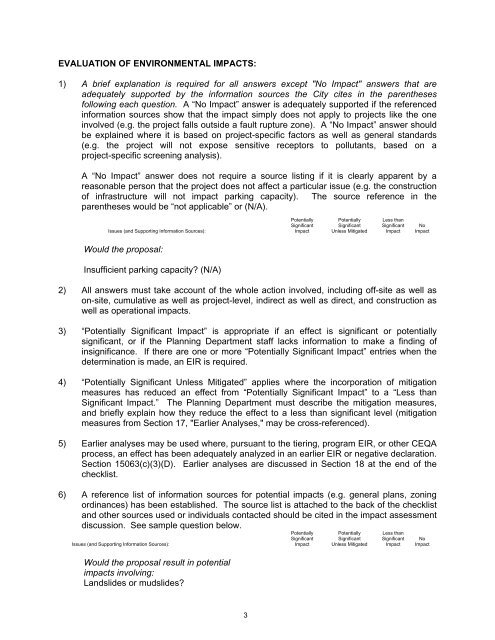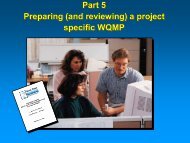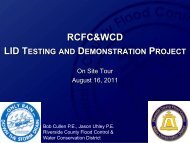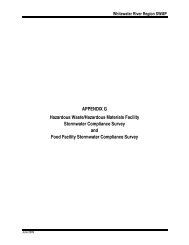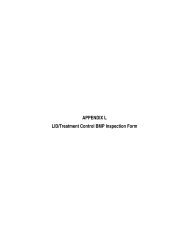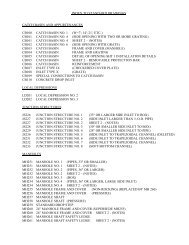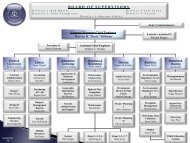May 23, 2005 - Riverside County Flood Control
May 23, 2005 - Riverside County Flood Control
May 23, 2005 - Riverside County Flood Control
Create successful ePaper yourself
Turn your PDF publications into a flip-book with our unique Google optimized e-Paper software.
EVALUATION OF ENVIRONMENTAL IMPACTS:<br />
1) A brief explanation is required for all answers except "No Impact" answers that are<br />
adequately supported by the information sources the City cites in the parentheses<br />
following each question. A “No Impact” answer is adequately supported if the referenced<br />
information sources show that the impact simply does not apply to projects like the one<br />
involved (e.g. the project falls outside a fault rupture zone). A “No Impact” answer should<br />
be explained where it is based on project-specific factors as well as general standards<br />
(e.g. the project will not expose sensitive receptors to pollutants, based on a<br />
project-specific screening analysis).<br />
A “No Impact” answer does not require a source listing if it is clearly apparent by a<br />
reasonable person that the project does not affect a particular issue (e.g. the construction<br />
of infrastructure will not impact parking capacity). The source reference in the<br />
parentheses would be “not applicable” or (N/A).<br />
Potentially Potentially Less than<br />
Significant Significant Significant No<br />
Issues (and Supporting Information Sources): Impact Unless Mitigated Impact Impact<br />
Would the proposal:<br />
Insufficient parking capacity (N/A)<br />
2) All answers must take account of the whole action involved, including off-site as well as<br />
on-site, cumulative as well as project-level, indirect as well as direct, and construction as<br />
well as operational impacts.<br />
3) “Potentially Significant Impact” is appropriate if an effect is significant or potentially<br />
significant, or if the Planning Department staff lacks information to make a finding of<br />
insignificance. If there are one or more “Potentially Significant Impact” entries when the<br />
determination is made, an EIR is required.<br />
4) “Potentially Significant Unless Mitigated” applies where the incorporation of mitigation<br />
measures has reduced an effect from “Potentially Significant Impact” to a “Less than<br />
Significant Impact.” The Planning Department must describe the mitigation measures,<br />
and briefly explain how they reduce the effect to a less than significant level (mitigation<br />
measures from Section 17, "Earlier Analyses," may be cross-referenced).<br />
5) Earlier analyses may be used where, pursuant to the tiering, program EIR, or other CEQA<br />
process, an effect has been adequately analyzed in an earlier EIR or negative declaration.<br />
Section 15063(c)(3)(D). Earlier analyses are discussed in Section 18 at the end of the<br />
checklist.<br />
6) A reference list of information sources for potential impacts (e.g. general plans, zoning<br />
ordinances) has been established. The source list is attached to the back of the checklist<br />
and other sources used or individuals contacted should be cited in the impact assessment<br />
discussion. See sample question below.<br />
Potentially Potentially Less than<br />
Significant Significant Significant No<br />
Issues (and Supporting Information Sources): Impact Unless Mitigated Impact Impact<br />
Would the proposal result in potential<br />
impacts involving:<br />
Landslides or mudslides<br />
3


